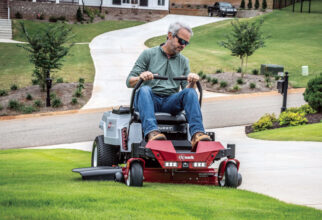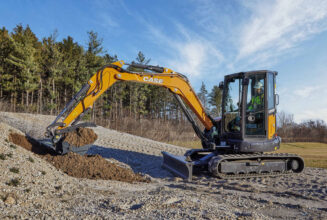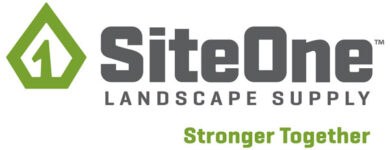Rent to grow: Cultivate your business through rental sales
By Bob Clements
As the OPE industry continues to evolve, I am seeing more and more dealers who are looking at adding a rental department to their business model. It makes great sense for most dealers because they already possess many of the key elements that make a rental department profitable: location, staffing, service, suppliers and an established customer base. It’s important to keep in mind that just as there are differences in how you run and manage your service, parts and wholegoods departments, the rental department presents its own set of opportunities that you will need to deal with. Let’s start by looking at why I think having a rental department makes sense in most OPE dealerships.
You have everything you need
Anyone in the rental business will tell you that your success will depend upon your ability to manage your cash flow, not unlike your OPE business. The main difference is that in your OPE business, the equipment is floor planned, and in most cases, you don’t have to pay for it until you sell it. In the rental business, you are investing in the equipment with the intention of renting it over and over again and eventually selling it. You have a much higher level of cash you will be investing up front with the goal to make it back over some period of time. After that difference, it becomes a lot like your existing business. Most of what you would need to buy if you were starting a rental business, you already have in place as an OPE dealer.
First and foremost, you don’t need to expand your store or add employees. Your utility costs are going to remain the same. You won’t need to invest in a truck for pickup and delivery. You already have a service department and everything you need to maintain the equipment you rent. You even have your vendors in place who are going to supply you with the equipment you will need to begin. Some will be wholegoods that you now own that you paid off on the floor plan but haven’t sold; other equipment will come from trade-ins you have accepted from customers who have purchased new equipment. For the most part, there is little, if any, initial outlay of cash you will have to make to get your rental business up and running.
Keep it simple
The key to success is to take it easy and build your rental fleet slowly. In most cases, there is no need to spend a lot of money to buy equipment to rent. You can easily build your fleet, as you have the opportunity, without spending extra money. One of my dealers had two new 20-ton log splitters and two rear-tine garden tillers, as well as three 21-inch mowers that were good trade-ins he had accepted. (While I am not a big fan of taking trade-ins, there are times when you can trade right, and it makes sense to do.)
We put together a simple rental agreement for him, did some checking around with rental companies in his area, and priced the equipment out so that we were at the same price point as his rental competitors.
For the log splitters, we charged $40 for a half day, $70 for a full day and $225 for a week. For the rear-tine tillers, we charged $50 for a half day, $90 for a full day and $230 for a week. And for the 21-inch mowers, we charged $15 for a half day, $25 for a full day and $90 for a week.
It was a simple decision to get in the business. We came to the conclusion that the equipment he owned, needed to be producing some level of revenue, and we might as well rent it and let it generate cash flow instead of having it sit on the showroom floor, taking up space, and collecting dust.
Ron Goens and Samantha Kaufman, service manager, assist customers at the front counter.You can’t manage what you don’t measure
If you have read my articles in OPE, you know that I am a “nut” on measuring what is going on in each department so that you always know where you are at. If rental is something you are thinking about adding to your dealership, then you have to be willing to measure what is happening so you can adjust accordingly and grow your business.
Ron Goens, one of the owners of Goens Rental & Sales in Gladstone, Mo., is a dealer that our company has worked with for several years. Ron’s business started as a rental equipment company and has made a transition to selling outdoor power equipment. He would tell you that the two keys to having success in the rental side of his business are equipment mix and utilization.
Ron’s equipment mix is based upon several variables that look at the seasonality of the area, his location, and his customer base – small contractors versus large contractors versus residential customers. As a rental company owner, he is also making decisions about how much cash his company can afford to pay each month toward equipment purchases. His rental equipment is constantly evolving with equipment coming and going all the time.
Ron’s company monitors its equipment on a line-by-line basis with a goal of making sure the equipment is rented enough to pay back 70 percent of its cost in the first year. If the payback is less than that amount, Ron analyzes why and adjusts his pricing or equipment levels.
Get your equipment mix and pricing right
In the rental business, the following four rules will help you determine if your equipment mix and pricing are right.
If it is out on rent regularly and making you enough to pay for 70 percent of the cost the first year, add another to your rental program.
If it is out on rent often but you are not generating enough to pay for 70 percent of a new one every year, raise your rental fee.
If you seldom rent it, and when you do, you are not making the appropriate amount of money, find a buyer from your customer base, make that person a good offer, and move it out.
If you don’t rent it often, but when you do, you make good money, then rethink your rental rates and consider reducing them a bit. For example, if you have a zero-turn mower that you rent out five days a month for $225 per day, you might consider lowering the price to $165 where you might rent it for 15 days instead.
When it comes to the rental side of your dealership, it’s not only important to make sure you have equipment that customers want to rent, but also to monitor what equipment you currently have that is making you money and what is just sitting there taking up space.
Goens Rental & Sales keeps all of its equipment in excellent condition with the option to buy or rent.Make it look like new
Just as it is important to keep your showroom and new wholegoods clean and presentable, the same holds true with your rental equipment. If your equipment is beaten up and poorly maintained, it will make an impact on what the customer will feel comfortable paying. You have a service department that can keep the equipment in perfect running condition, clean and sharp looking; your job is to make sure that they do it. You want your customers to take care of the equipment that they rent from you; the better you take care of it, the better they will take care of it.
For example, I travel a lot and am constantly renting cars, especially from Enterprise Rent-a-Car on a pretty regular basis when I travel from city to city. There are several things you will notice about Enterprise, with the first being the attitude of its employees. They are well dressed, energetic and willing to help in any way possible. The other thing is the condition of Enterprise’s cars. When you rent from Enterprise, the employees take time to walk you around the car and note any scratches, dents or marks. They do that for a couple of reasons: 1) to make you aware that they sent it out in good condition, and they expect it back in the same condition; and 2) to make you aware that you are responsible for any damage that happens to the car while it is in your possession. When I rent from Enterprise, I tend to be a little more careful of where I park and how I drive because I know when I return the car, an Enterprise representative is going to walk around it again and compare its condition to how it was when I took it out.
Keep a lost rental log
When you begin adding equipment to your rental fleet, you are taking what you already own and working to get it rented. As your rental business develops, you may want to consider expanding your equipment offerings. Rather than just randomly adding pieces and trying them out, have your employees keep track of equipment requests made by your customers.
If you have several customers come in and ask if you rent chain saws when you don’t, then it might be a good idea to put one in as a rental item. (If or when you choose to rent a chain saw, make sure that as a part of the rental it comes with safety chaps and ear and eye protection, and that you give instructions on how to operate it safely.) Your goal is to have your employees record in a log book, each time they receive a customer demand for a piece of equipment that isn’t met. It is similar to the lost sales report you should be running on your parts department. As an owner, you are looking at specifically why the sale was lost. Was it because you had everything rented out and didn’t have another one to rent at that particular time? Did the customer choose not to rent because the price was too high? Or, was it a piece of equipment you do not currently stock in your rental fleet? Whatever the reason, you want to know what it is, so that you can decide on ways to improve your rental profits.
Don’t buy based upon hope
For those dealers that are involved with commercial customers, be cautious about investing in equipment based upon the upcoming work or projects your commercial guy tells you “is just around the corner.”
You don’t want to add equipment just for the sake of adding equipment to meet the needs of one project that may or may not happen. Instead, understand your complete cycle and make purchasing decisions based upon broadening your customer base or better meeting the needs of your existing customers.
Even though the rental business is not right for every outdoor power equipment dealer, it is something that every dealer should at least give some consideration. You will find that renting equipment has the ability to improve your cash flow, as well as to help keep your service department busy during the slow season as your employees work to service, clean, and get the equipment ready for another season.
At some point, your rental income will become a significant part of your business and you will need to have a conversation with your insurance company to discuss adding a rider to your existing policy to cover any exposure you might have. Every insurance company has a different policy on what a “significant” part of your business means, so make sure you are covered should there be a problem.
With a little marketing, you can attract new customers who are in need of something as simple as a log splitter or concrete saw that they don’t want to purchase but want to satisfy a short-term need. As those customers are exposed to your rental equipment, you have the ability to let them experience the other aspects of your dealership. It will take some time to get your rental department up and running, but I believe that it makes a lot of sense for most dealers.
If you would like a copy of our rental agreement and a list of rental rates for outdoor power equipment, send an e-mail request to bob@bobclements.com.
Bob Clements is the president of Bob Clements International, Inc., a consulting firm that specializes in the development of high-performance dealerships. His organization works hands on with dealerships throughout North America, helping them attain the personal freedom and financial wealth all owners strive to achieve. For more information, contact Bob Clements at (800) 480-0737 or bob@bobclements.com or visit his Web site at www.bobclements.com.




